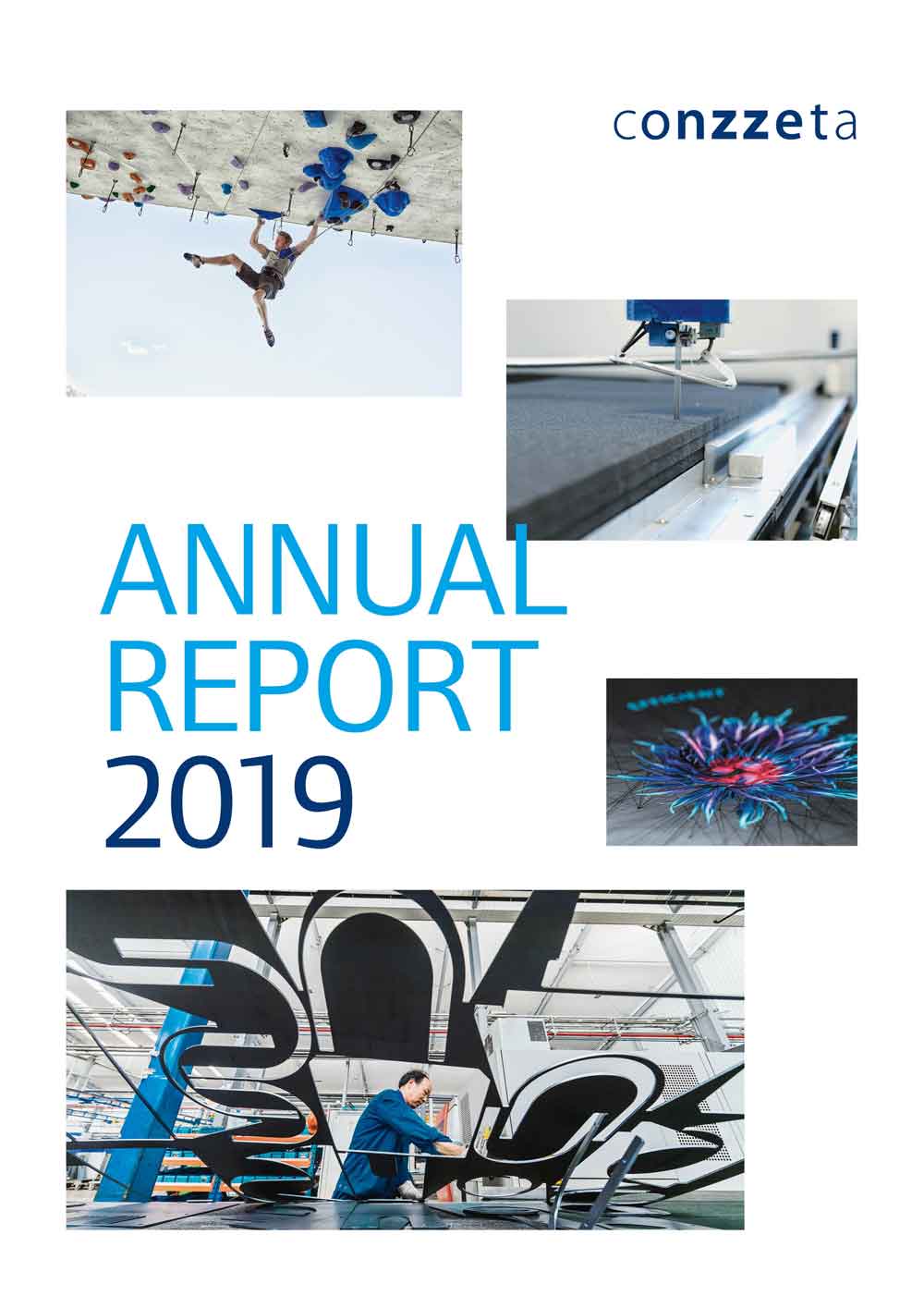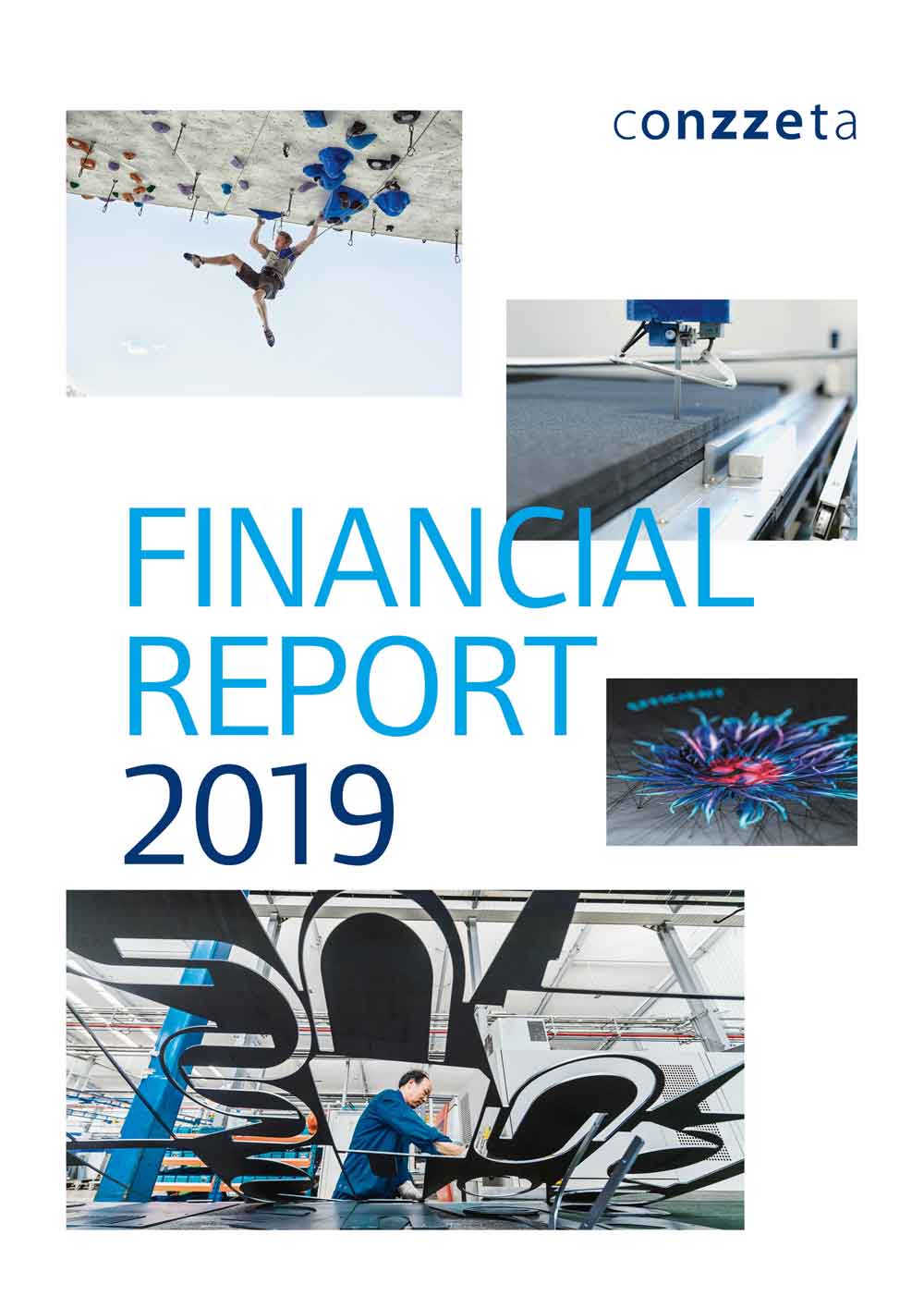Responsibility
Conzzeta ESG roadmap
Conzzeta is in constant pursuit of sustainable value creation. This requires giving adequate consideration to environmental, social and governance (ESG) issues in management processes, as well as transparent communication. An internal review was performed in 2017 as part of a three-stage roadmap adopted by the Executive Committee. On the basis of this, a materiality assessment was prepared in 2018, and the key issues for the Group were published in the Annual Report 2018. The third step, taken in 2019, was to develop an ESG reporting model for these key issues.
Conzzeta’s ESG reporting model
Conzzeta’s ESG reporting model is based on a detailed analysis of all business units and describes the approach to be taken to ensure consistent reporting on each key issue. This involves recording the most important aspects, such as opportunities and challenges, aspirations, the basic managerial approach, and indicators for measuring the actual state of affairs and improvements.
The first phase in the development of the reporting model was to determine, with input from the Executive Committee, the long-term aims and aspiration levels for each key issue. The second phase was to carry out a comprehensive stocktaking in order to identify existing managerial approaches and activities. This also included reviewing data availability for Group-wide ESG indicators. During the third phase, the findings were consolidated and an implementation plan was formulated.
The general managerial approaches for each key issue form an important component of the reporting model. They define the level at which an issue is dealt with: at Group level, or moderated by the Group, or primarily dealt with at the business unit level.
|
|
Material topic |
|
Approach 1 |
|
Aim |
|
|
|
|
|
|
|
|
|
|
Environmental aspects |
Energy & Climate Change |
|
2 |
|
To reduce greenhouse gas emissions and energy consumption in the organization, the supply chain and the products in order to support the transition to a low-carbon economy. |
|
|
Environmental aspects |
Chemicals in Production |
|
3 |
|
To minimize potential hazardous impacts of chemicals. |
|
|
Environmental aspects |
Longevity & Cyclability |
|
3 |
|
To lenghten the lifespan of products to the extent technically and economically feasible, and at the same time to continually invest in the transformation to a circular economy. |
|
|
Social aspects |
Product Safety |
|
3 |
|
To avoid negative impacts on health and safety caused by products and services, and to promote products with neutral or positive health and safety profiles. |
|
|
Social aspects |
Working Conditions |
|
1 / 3 |
|
To increase employee satisfaction and to provide a safe, healthy and attractive work environment. |
|
|
Social aspects |
Diversity & Inclusion |
|
1 |
|
To promote diversity and inclusion by increasing or maintaining gender diversity, age diversity and diversity of ethnic/cultural background. |
|
|
Economic aspects |
Innovation |
|
2 |
|
To promote sustainable innovation with long-term values for society, the environment and the economy. |
|
|
Economic aspects |
Viability of Business Model |
|
2 |
|
To ensure the long-term sustainability of business models by incorporating long-term perspectives and megatrends in strategy determination and decision-making processes. |
|
|
Economic aspects |
Economic Performance |
|
2 |
|
To maintain the healthy economic condition of the company. |
|
|
|
|
|
|
|
|
|
1 Approach: 1) Group 2) Moderated by the Group 3) Business units
Outcome
Over the course of the project, the Executive Committee adopted a managerial approach, an aspiration and an aim for each key issue specifically, and agreed on the next steps for implementation. In time, Conzzeta aims to play a pioneering role in the areas of innovation and longevity & recyclability. Additional resources were budgeted in 2020 for the implementation of measures in connection with the broad issue of climate change & energy, including calculation of the CO2 footprint of selected production facilities of Bystronic and FoamPartner. The Executive Committee also decided to give greater consideration to the issue of longevity & recyclability in product management and innovation processes.
Next steps
Implementation of the ESG reporting model, which should have commenced with this Annual Report 2019, was halted due to the new strategic direction announced on December 9, 2019. As part of reorganizing its priorities, in 2020 the Group plans to review the key issues insofar as they concern Bystronic as an independent business, and to calculate the CO2 footprint of Bystronic’s Niederönz facility. The discontinued business units have laid solid foundations based on the materiality assessment carried out in 2018 and the detailed reporting model developed in 2019.
Developments within the business units
The Outdoor segment (Mammut) has been involved in sustainability space for many years. The company has been a member of the Fair Wear Foundation for over ten years, and in this context has been publishing a Social Report since 2009. In addition, the “WE CARE” sustainability strategy was launched in 2018 to ensure greater consideration of social and environmental matters. It involves four key priorities: the protection of natural resources, ethical production, animal welfare and minimizing harmful substances in supply chains and products.
The company also signed the UN Fashion Industry Charter for Climate Action in December 2018. In doing so, Mammut committed to a 30% reduction in CO2 by 2030. It is also aiming for “net zero emissions” by 2050 – an ongoing strict reduction in CO2 levels which corresponds with the requirements of the 2015 Paris Agreement. As part of these commitments, Mammut is also working with the Swiss Glacier Initiative with financial assistance from Conzzeta. This initiative is a political push to enshrine CO2 reduction targets in the Swiss Constitution.
Reduction of harmful emissions
In order to meet its ambitious reduction targets, Mammut calculated its CO2 footprint in 2019. The process of calculating emissions was carried out with external support in accordance with the Greenhouse Gas Protocol. The process to determine emissions distinguishes between three different categories, which are referred to as scope 1 (direct emissions from sources owned or controlled by the company), scope 2 (indirect emissions from the generation of purchased energy) and scope 3 (indirect emissions from product manufacture and use). The data collected therefore includes CO2 emissions along the entire value chain and for the entire range of products and services.
For the year 2018, Mammut’s CO2 footprint was 58,000 t of CO2 equivalents. This corresponds with approximately 15,500 cars driven permanently during a one-year period, or 27,000 times the average annual energy consumption of one household. Around 95% of these emissions were classified as scope 3 emissions, primarily in product manufacture (approximately 72% of the total CO2 emissions). At around 5%, the level of scope 1 and 2 emissions was low in the overall balance.
Based on these findings, Mammut plans to develop specific and effective measures in the areas of product manufacture and product use by customers in order to reduce scope 3 emissions in 2020.

